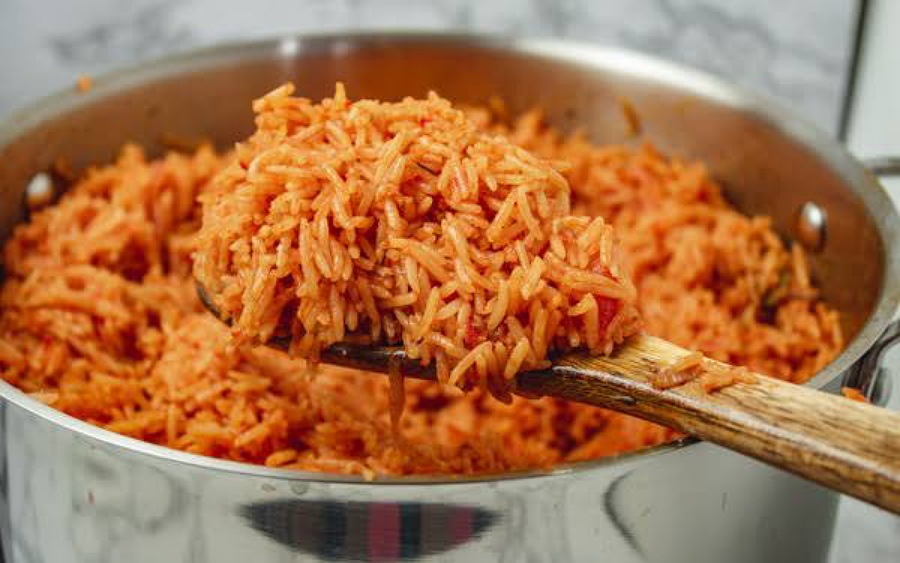The average cost of making a pot of jollof rice for a family of five in Nigeria increased from an average price of N9,220 in June to N9,917 in September.
This was disclosed by socioeconomic research firm, SBM Intelligence in its Jollof Index report for Q3 2022 titled “Brace for Impact”.
The report said the rising costs were induced by a lack of forex for food purchases through official sources and most recently, by floods that have destroyed large rice farmlands which supplement the imported quantities.
What they said:
The report showed that across the 13 markets surveyed, Wuse II recorded the highest cost of making a pot of jollof rice at N13,150, while Onitsha recorded the lowest cost at N8,510. The report also highlighted the factors responsible for the increase, saying:
- “First, the naira keeps losing value against the dollar, thus increasing the cost of purchasing foreign rice, which most Nigerians consume.
- “The scarcity of forex for food purchases through official sources also adds to this increased cost. The more concerning information is that these prices will further increase as floods destroy large rice farmlands, which supplement the imported quantities” they added.
The report revealed that In Nasarawa alone, $15 million worth of rice farms were submerged by floods, which means there will be a poor harvest this season.
- “This means that in about one year, domestic production of rice will reduce considerably.
- “Rice prices have been up for some time. Taking the Wuse market as a case, we see that the cost of a 50kg bag of foreign rice has increased progressively from N30,000 in July 2021 to N40,000 in September 2022. With the flood-related losses, this is bound to increase through the next year” the report said.
Different factors are driving high prices in Wuse II, including insecurity which disrupts the supply chain.
“All these push up the costs of transporting agricultural products to the capital. In addition, Abuja and other northern states are experiencing fuel scarcity attributed to the lack of access roads due to the flooding in Lokoja, Kogi State, which is the only viable route that connects Lagos to Abuja.”
SBM said it expects a heightened food crisis in the region in the coming months as the traders interviewed at the beginning of the fuel scarcity were overwhelmed.
- “They complained of the rising cost of transportation and the outright refusal of transporters to go to some states because of the uncertainty of getting fuel and fear of the security situation.
- “Aside from floods, other drivers of food prices, such as insecurity, increased energy costs, fuel scarcity, and forex restrictions, have been repeatedly discussed in previous Jollof Index reports. These issues affect food production, supply chains and incomes.”
They warned of an FAO WFP6 report on hunger hotspots and early warnings on acute food insecurity from October 2022 to January 2023, which places Nigeria on the highest alert level of countries along with Afghanistan, Ethiopia, Somalia, South Sudan and Yemen.
These highest alert level countries are already facing critical food insecurity and are at risk of deterioration and having all their populations facing or projected to face starvation.
What you should know
- Nairametrics reported that Nigeria’s food inflation rate in September 2022 was 23.34%, an uptick from the 23.12% recorded in the previous month.
- The increase in the food index was attributed to the increase in the prices of bread and cereals, food products, potatoes, yams, other tubers, oil, and fat.
- Nairametrics also reported in July that SBM’s Q2 Jollof index showed The average cost of cooking a pot of Jollof Rice went up from N8,595 to N9,311 at the end of Q2 2022, an 8.3% increase.
